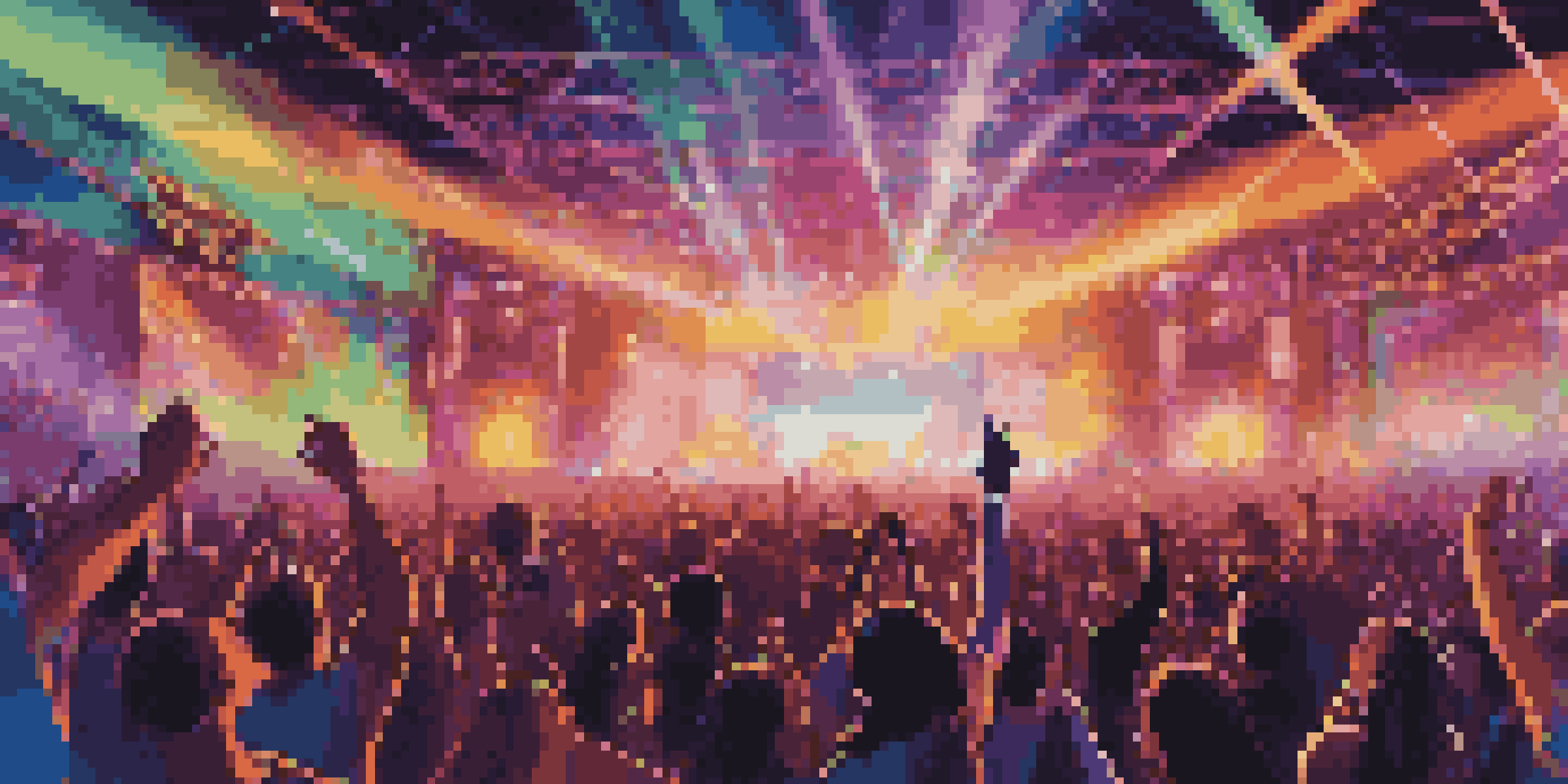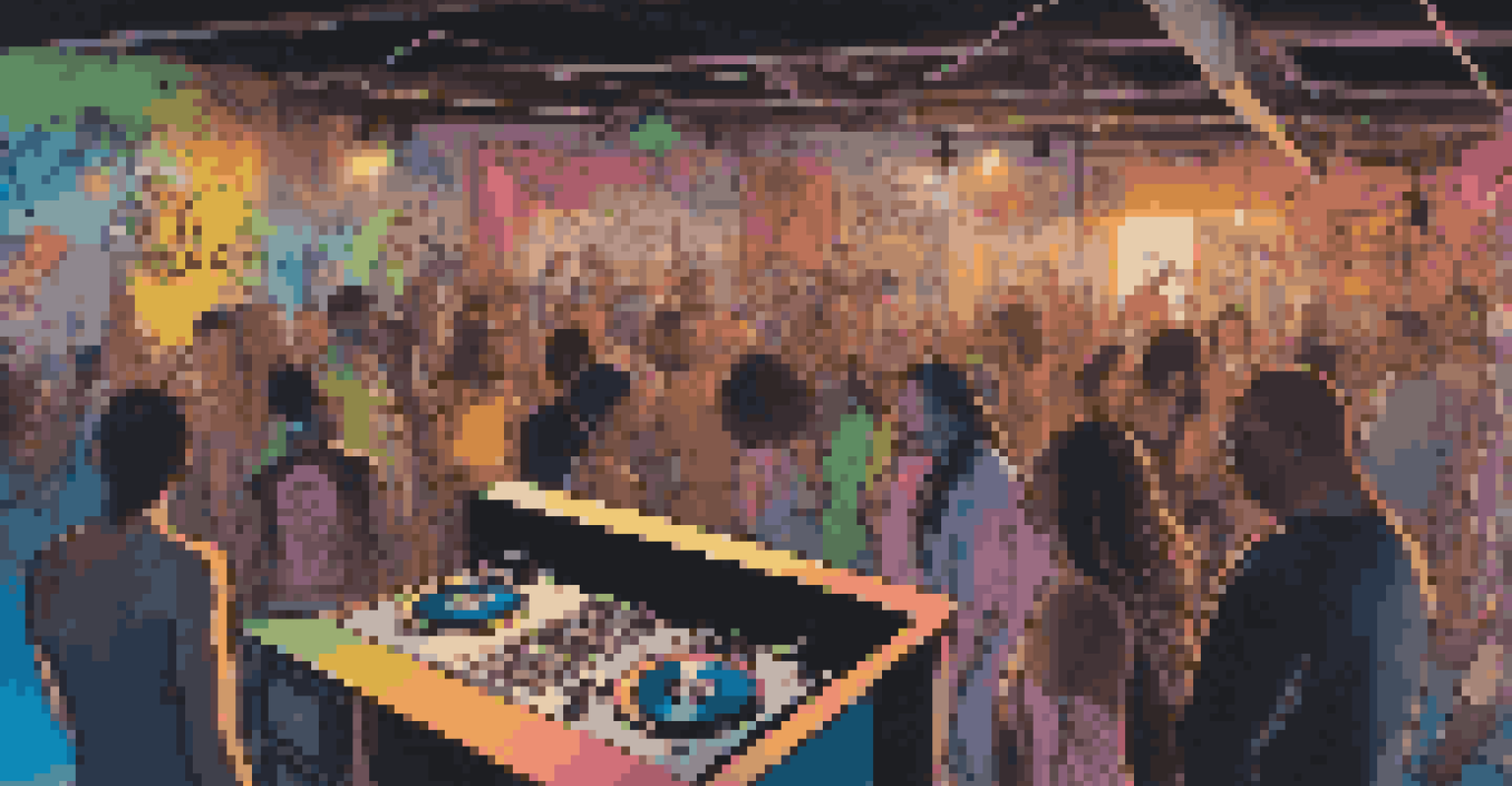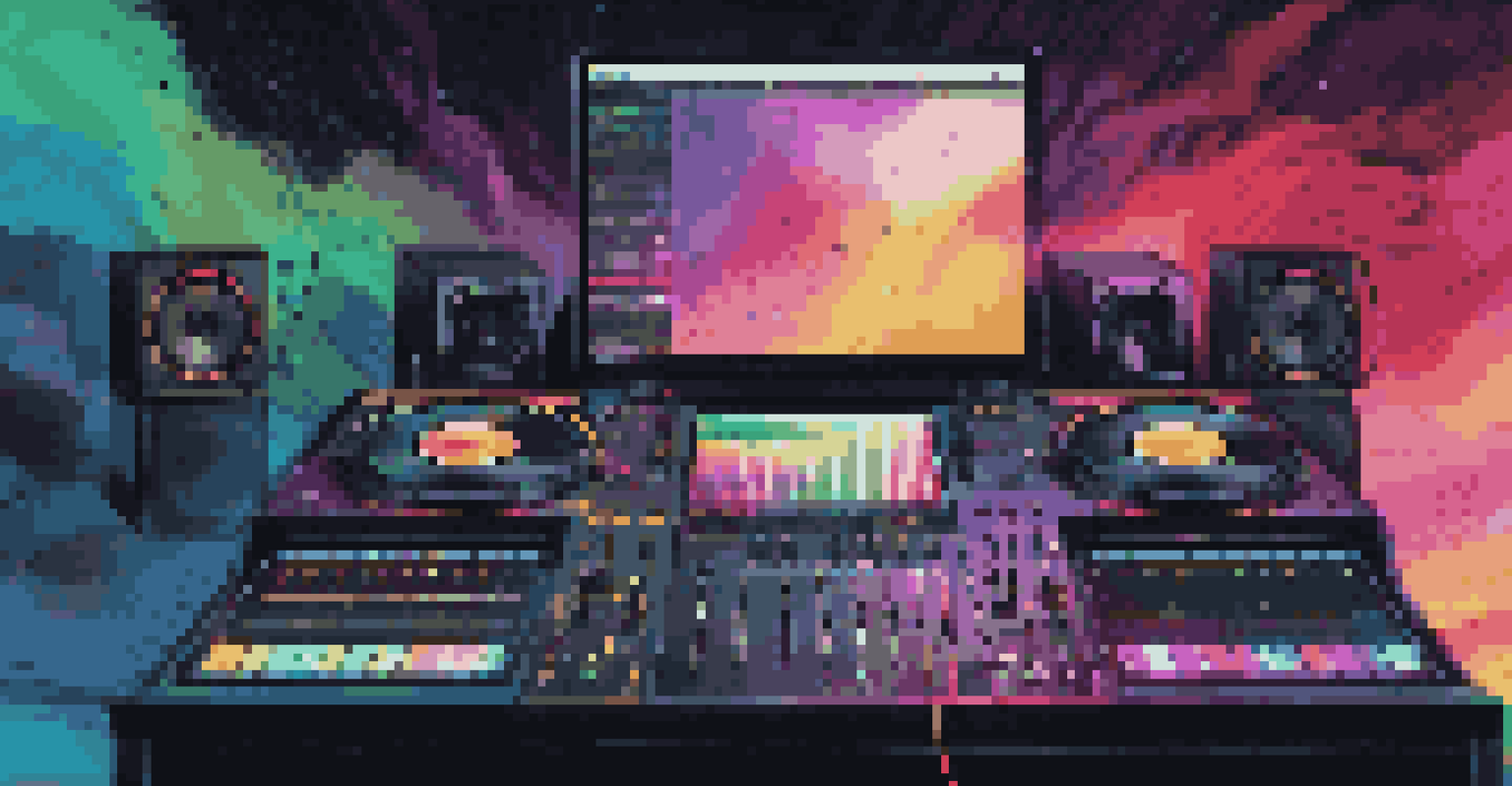Exploring the Cultural Roots of Electronic Dance Music

The Origins of Electronic Dance Music: A Brief Overview
Electronic Dance Music (EDM) has roots that stretch back to the late 1970s and early 1980s. It emerged as a response to both technological advancements and cultural shifts in society. The advent of synthesizers and drum machines enabled musicians to create sounds that were previously unimaginable, paving the way for new genres.
Music is the universal language of mankind.
As disco waned, underground scenes began to flourish, particularly in cities like Chicago and Detroit. These locales became breeding grounds for house and techno music, respectively. Artists like Frankie Knuckles and Juan Atkins played pivotal roles in defining these genres, bringing unique sounds that blended various influences.
Thus, EDM wasn't born in isolation; it was a vibrant amalgamation of cultural influences, technological innovation, and community spirit. This rich tapestry of history continues to shape the genre as we know it today.
Key Influences: Jazz, Funk, and Disco
To truly understand EDM, it's essential to recognize its key influences. Jazz, with its improvisational spirit, funk's infectious grooves, and disco's danceable beats all played significant roles in shaping the sound. These genres brought a sense of rhythm and energy that continues to resonate in EDM tracks.

For instance, many early house tracks sampled disco records, blending the catchy hooks and basslines with electronic elements. This blending of genres created a dynamic sound that attracted diverse audiences. Artists began to experiment, pushing the boundaries of what dance music could be.
EDM's Rich Cultural Roots
Electronic Dance Music originated from a blend of cultural influences and technological advancements, shaping its unique sound and community spirit.
These influences are not just historical footnotes; they are embedded in the DNA of EDM. The genre's evolution reflects a rich tapestry of musical heritage that continues to inspire new generations of artists.
Cultural Movements: Rave and Club Scenes
Cultural movements have played a pivotal role in the growth of EDM, particularly the rave and club scenes. In the late 1980s and early 1990s, raves became the heartbeat of the electronic music community, promoting ideals of freedom, unity, and self-expression. These underground parties were often held in unconventional spaces, emphasizing a sense of rebellion against mainstream culture.
The only way to make sense out of change is to plunge into it, move with it, and join the dance.
As raves proliferated, so did the sense of community among attendees. People from different backgrounds came together to dance and celebrate life, creating a unique subculture. This sense of belonging became integral to the EDM experience, influencing how artists connect with their audiences.
Clubs, too, have been instrumental in shaping the EDM landscape. Iconic venues like The Warehouse in Chicago and The Shelter in Detroit became sanctuaries for fans, where the music and atmosphere fostered unforgettable experiences.
The Globalization of EDM: A Worldwide Phenomenon
Over the past few decades, EDM has transcended borders, becoming a global phenomenon. Festivals like Tomorrowland and Ultra Music Festival have attracted audiences from around the world, showcasing the genre's universal appeal. This globalization has not only expanded the audience but also diversified the sounds and styles within EDM.
With artists from various countries contributing their cultural influences, EDM has evolved into a melting pot of genres. For example, the infusion of Afrobeat rhythms, Latin sounds, and even Asian musical elements has created unique subgenres that resonate globally. This blending enriches the music and opens doors for new collaborations.
Global Expansion of EDM
Over the years, EDM has transcended borders, evolving into a global phenomenon that incorporates diverse cultural sounds and styles.
Moreover, the rise of social media has played a pivotal role in this globalization, allowing fans to connect and share their love for EDM regardless of geographic barriers. As a result, the genre continues to thrive and adapt, reflecting the vibrant tapestry of global cultures.
Technological Innovations: Shaping EDM's Sound
Technological advancements have significantly influenced the evolution of EDM. From synthesizers to digital audio workstations (DAWs), technology has empowered artists to experiment and innovate. These tools allow for a level of creativity that was unimaginable in earlier decades, enabling the production of complex and dynamic sounds.
For example, the introduction of MIDI (Musical Instrument Digital Interface) revolutionized how musicians compose and perform music. Artists can easily manipulate sounds, create intricate arrangements, and collaborate with others across the globe. This accessibility has lowered barriers to entry, allowing aspiring producers to create and share their music more easily.
As technology continues to advance, so too does the sound of EDM. Each new development opens up possibilities for artists to push the genre further, ensuring that EDM remains a vibrant and ever-evolving art form.
The Role of Festivals in EDM Culture
Festivals have become cornerstone events in the EDM community, serving as epicenters for music, art, and culture. Events like Coachella and Electric Daisy Carnival not only showcase top-tier talent but also create immersive experiences for attendees. These festivals often feature elaborate stage designs, light shows, and interactive art installations, transforming them into multi-sensory environments.
Moreover, festivals foster a sense of community and inclusivity, bringing together fans from diverse backgrounds. The shared experience of enjoying music in a vibrant setting enhances the feeling of unity among attendees. This sense of belonging is a crucial aspect of the EDM culture.
Future Trends in EDM
The future of EDM is set to explore live instrumentation and immersive technologies, ensuring its continued evolution and relevance in the music scene.
Additionally, festivals serve as a platform for emerging artists, giving them exposure to larger audiences. This helps to ensure that the EDM scene remains fresh and innovative, as new voices and sounds continually emerge.
The Future of EDM: Trends and Predictions
As we look to the future, several trends are shaping the evolution of EDM. One notable trend is the increasing incorporation of live instruments and performances, blurring the lines between electronic and live music. Artists are exploring ways to create more organic sounds, enhancing the connection with their audience.
Another trend is the rise of virtual reality (VR) and augmented reality (AR) experiences within the EDM space. These technologies promise to redefine how fans engage with music, offering immersive environments that enhance the festival and concert experience. Such innovations could transform how artists connect with their audience.

Moreover, as global influences continue to shape the genre, we can expect to see more cross-genre collaborations. This blending of styles will allow EDM to remain relevant and exciting, ensuring its place in the ever-changing landscape of music.